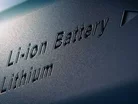Lithium-ion battery binders market to be worth $3.7 billion

With industries such as consumer electrics, the industrial markets, and EV all relying heavily on lithium-ion battery binders, demand is, unsurprisingly, set to surge in the coming years. This is projected to grow from $1.6 billion in 2022 to $3.7 billion by 2027, at a CAGR of 18.7% from 2022 to 2027, as per a recent study by MarketsandMarkets.
The types of lithium-ion battery binders are categorised as anode lithium-ion battery binders and cathode lithium-ion battery binders. By value, the anode lithium-ion battery binders are anticipated to have the largest segment during the forecast period.
While anode binders only account for a small percentage of the overall weight of a lithium-ion battery, they are crucial to battery cell construction and offer various advantages such as enhancing safety and increasing energy density to capacity. Consequently, this is expected to drive the market share of this segment further.
Lithium-ion battery binders are classified based on material into polyvinylidene fluoride, carboxymethyl cellulose, polymethyl methacrylate, polytetrafluoroethylene, styrene-butadiene copolymer, and others. During the forecast period, the polyvinylidene fluoride material is projected to have the largest segment. Polyvinylidene fluoride or polyvinylidene difluoride (PVDF) is a highly pure and non-reactive thermoplastic fluoropolymer produced through the polymerisation of vinylidene difluoride. It is a semi-crystalline polymer with a high melting temperature and crystallinity, making it widely used in the manufacturing of lithium-ion battery binders. As a result, the extensive use of polyvinylidene fluoride as a battery binder is expected to propel the segment's market.
- Inside Rio Tinto’s US$6.7bn Arcadium Lithium AcquisitionSustainability
- Tesla faces higher lithium prices with multi-year dealSupply Chain & Operations
- Glencore signs strategic partnership with Li-Cycle HoldingsSustainability
- The 5 Largest Lithium Mining Companies in the WorldSupply Chain & Operations



